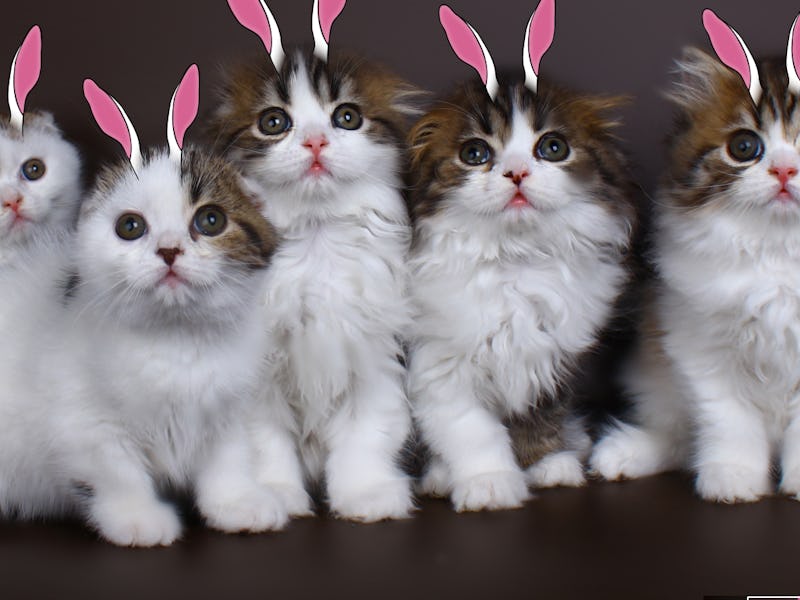Consider a kitten and a bunny: The only thing they seem to have in common is that they’re both extremely cute. Otherwise, kittens grow to be cats — sweet ecological nightmares that love their humans, sitting in hidey-holes, and murdering. Domesticated bunnies, meanwhile, are small rodents that are born furless and are the natural prey of cats. How could these star-crossed creatures ever get along?
It’s unlikely, but in an incredibly adorable video from 2016 that Twitter resurfaced on Wednesday, we see a group of bunnies and kittens sharing a grass pen. Suddenly the kittens start hopping around, like rabbits, as if they weren’t born apex predators. The little jump-and-twist move they perform is, no joke, called a binky among rabbit enthusiasts and is understood to be something bunnies do when they’re happy (please see the forum What Makes Your Bunny Binky? if you’re curious). In this situation, both kittens and bunnies seem to be happy: So what gives?
What might explain their imitation game is a framework called the social learning theory. Among humans, this is the idea that the decisions people make are influenced by what other people do. In the days of early Homo sapiens, this may have involved copying your neighbor’s foraging techniques; today, it’s following the crowd away from an empty subway car because you know that thing is going to stink.
Some scientists think that animals also use social learning, which, they reason, is why the same types of animals demonstrate different behaviors when they live in different geographical locations. These include a myriad of traits, including food preferences, fear responses, and, importantly, the creation of identity through tutoring. The latter is the idea that “there is a strong correlation between the number of other individuals engaging in a behavior and an individual’s likelihood of replicating the behavior or otherwise conforming,” as a team of international scientists wrote in a 2014 study in Frontiers in Neuroscience. Young rats, for example, are more likely to choose piles of food previously munched on by older rats. Guppies, meanwhile, will swim through a route faster if the fish leading the charge is one they’ve interacted with before.
However, some academics believe that there haven’t been enough controlled trials of animal social learning to confirm that it’s a totally sound theory. Is it enough for kittens to be raised around bunnies for them to pick up on movements typical for an animal outside of their own species? With only a single cute-as-hell video as evidence, it’s hard to tell for sure. But if binky-ing around appeared to be a beneficial behavior to the bunnies, then it’s not improbable that the kittens learned to follow suit.
